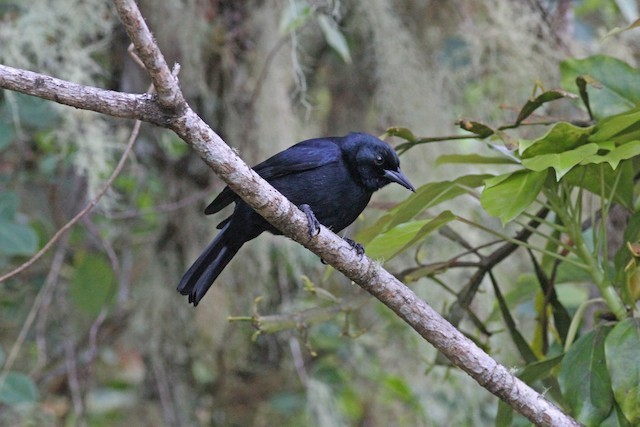Birdfinding.info ⇒ An uncommon, localized, and declining resident of wet montane forests with abundant epiphytes. Probably Jamaica’s most endangered endemic bird, it may already or soon be confined to the eastern mountains. The most accessible site where it can usually be found is Hardwar Gap. Equally reliable, but less convenient, are Silver Hill and Portland Gaps. Can sometimes be found near the crest of Ecclesdown Road.
Jamaican Blackbird
Nesopsar nigerrimus
Endemic to Jamaica, where it is an uncommon, localized, declining, and endangered resident of wet montane forests with abundant epiphytes. Its last known stronghold is the Blue and John Crow Mountains.
Smaller populations may persist in the western highlands, mainly in Cockpit Country and the Mount Diablo area. A 2017 report from Font Hill Nature Preserve suggests that it may occur west to the Bluefields Mountains.
Identification
A plump, black icterid with a glossy blue-and-purplish sheen and a straight, sharp-tipped, daggerlike bill.
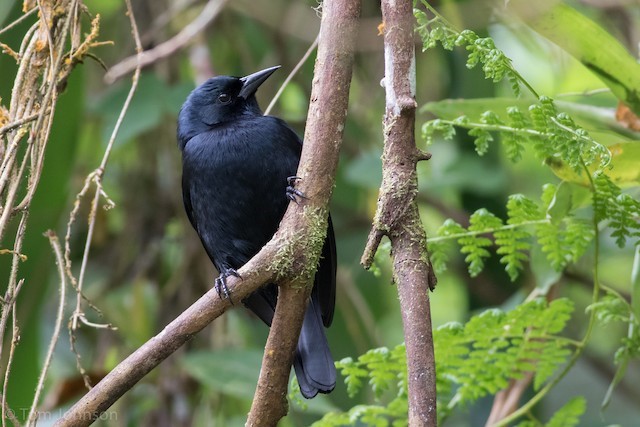
Jamaican Blackbird. (Hardwar Gap, Jamaica; March 6, 2018.) © Tom Johnson
Readily distinguished from other all-black birds by its habitat and behavior. Typically forages at mid-levels, rummaging through epiphytic bromeliads, ferns, moss, and loose bark, often flinging a hail of litter as it works.
Its attachment to this technique limits its preferred habitat to lush, mature forest. The noise of falling debris often gives away its presence.

Jamaican Blackbird, engaged in characteristic foraging behavior. (Silver Hill Gap, Jamaica; March 22, 2015.) © Sam Woods

Jamaican Blackbird. (Blue Mountains, Jamaica; December 14, 2017.) © Kevin Schafer
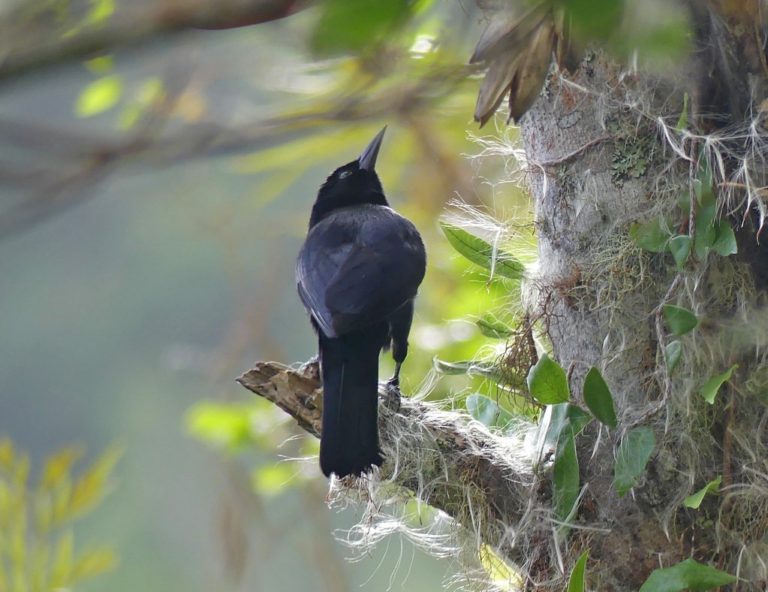
Jamaican Blackbird. (Hardwar Gap, Jamaica; June 7, 2016.) © Francisco Piedrahita
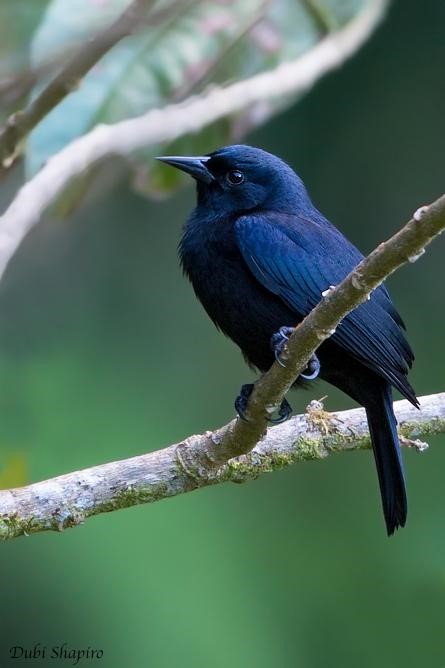
Jamaican Blackbird, a remarkably clear portrait that shows its glossy blue-and-purplish sheen. (Blue Mountains, Jamaica; February 26, 2018.) © Dubi Shapiro
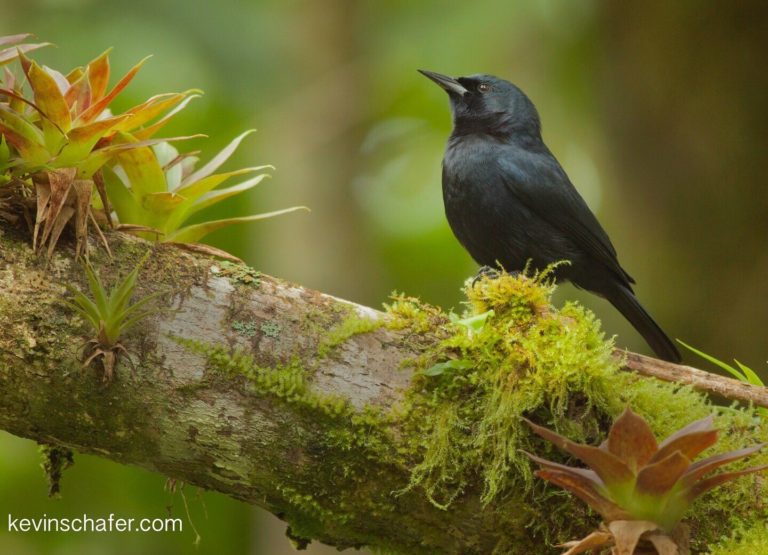
Jamaican Blackbird, showing its predilection for moss and bromeliads. (Blue Mountains, Jamaica; December 17, 2017.) © Kevin Schafer
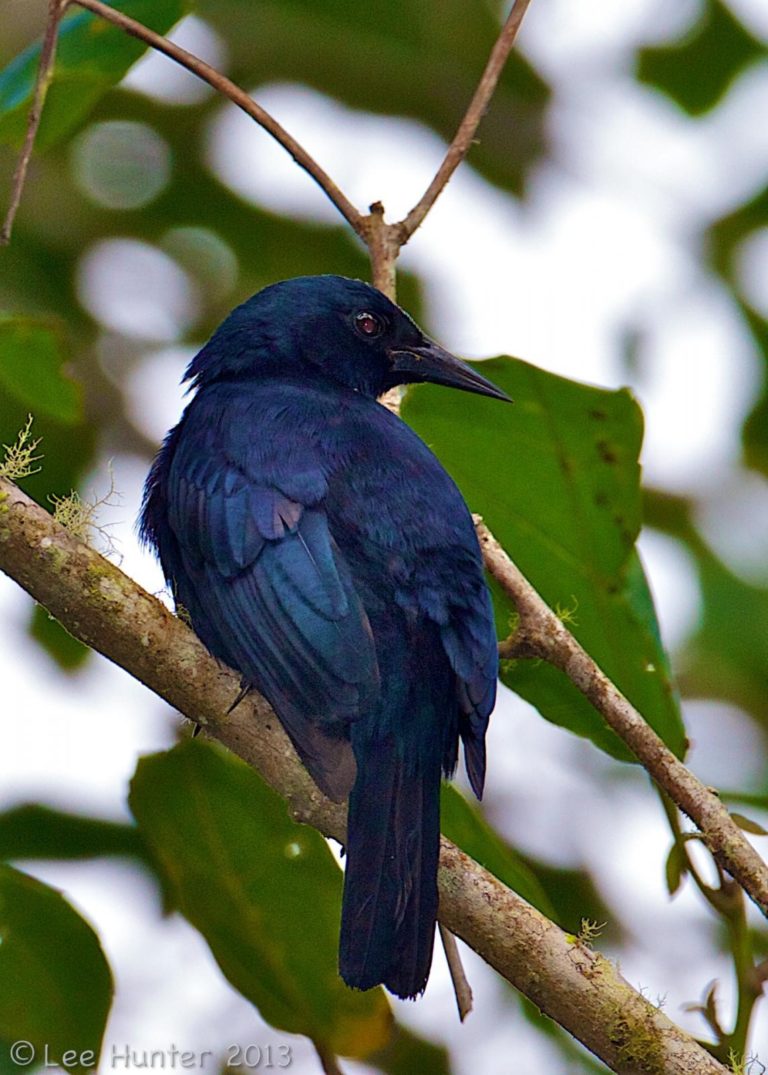
Jamaican Blackbird, showing its glossy blue-and-purplish sheen. (Blue Mountains, Jamaica; January 6, 2011.) © Lee Hunter
Notes
Monotypic species and genus.
IUCN Red List Status: Endangered.
References
BirdLife International. 2016. Nesopsar nigerrimus. The IUCN Red List of Threatened Species 2016: e.T22724163A94852425. http://dx.doi.org/10.2305/IUCN.UK.2016-3.RLTS.T22724163A94852425.en. (Accessed May 26, 2019.)
eBird. 2019. eBird: An online database of bird distribution and abundance. Cornell Lab of Ornithology, Ithaca, N.Y. http://www.ebird.org. (Accessed May 26, 2019.)
Fraga, R. 2019. Jamaican Blackbird (Nesopsar nigerrimus). In Handbook of the Birds of the World Alive (J. del Hoyo, A. Elliott, J. Sargatal, D.A. Christie, and E. de Juana, eds.). Lynx Edicions, Barcelona. https://www.hbw.com/node/62279. (Accessed May 26, 2019.)
Haynes-Sutton, A., A. Downer, R. Sutton, and Y.-J. Rey-Millet. 2009. A Photographic Guide to the Birds of Jamaica. Princeton University Press, Princeton, N.J.
Jaramillo, A., and P. Burke. 1999. New World Blackbirds: The Icterids. Princeton University Press, Princeton, N.J.
Raffaele, H., J. Wiley, O. Garrido, A. Keith, and J. Raffaele. 1998. A Guide to the Birds of the West Indies. Princeton University Press, Princeton, N.J.
